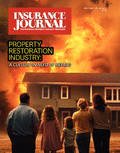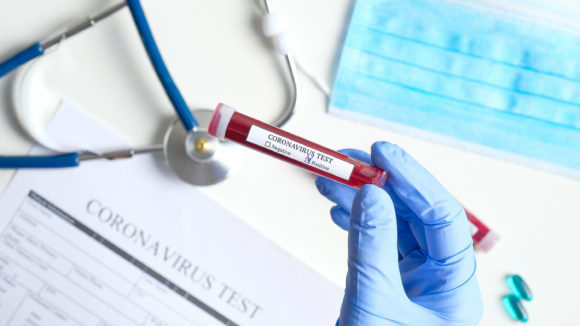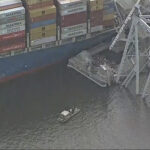According to the Occupational Safety and Health Administration (OSHA), which is responsible for workplace safety regulations, certain workers are at higher risk than others for exposure to the coronavirus and the disease COVID-19.
Nurses, doctors, lab and morgue workers are among those at highest risk.
The agency has issued voluntary guidelines with steps employers should take to protect workers.
The following is OSHA’s guidance on which workers are at very high to low risk of exposure.
Very High Exposure Risk
Very high exposure risk jobs are those with high potential for exposure to known or suspected sources of COVID-19 during specific medical, postmortem, or laboratory procedures. Workers in this category include:
- Healthcare workers (e.g., doctors, nurses, dentists, paramedics, emergency medical technicians) performing aerosol-generating procedures (e.g., intubation, cough induction procedures, bronchoscopies, some dental procedures and exams, or invasive specimen collection) on known or suspected COVID-19 patients.
- Healthcare or laboratory personnel collecting or handling specimens from known or suspected COVID-19 patients (e.g., manipulating cultures from known or suspected COVID-19 patients).
- Morgue workers performing autopsies, which generally involve aerosol-generating procedures, on the bodies of people who are known to have, or suspected of having, COVID-19 at the time of their death.
High Exposure Risk
High exposure risk jobs are those with high potential for exposure to known or suspected sources of COVID-19. Workers in this category include:
- Healthcare delivery and support staff (e.g., doctors, nurses, and other hospital staff who must enter patients’ rooms) exposed to known or suspected COVID-19 patients. (Note: when such workers perform aerosol-generating procedures, their exposure risk level becomes very high.)
- Medical transport workers (e.g., ambulance vehicle operators) moving known or suspected COVID-19 patients in enclosed vehicles.
- Mortuary workers involved in preparing (e.g., for burial or cremation) the bodies of people who are known to have, or suspected of having, COVID-19 at the time of their death.
Medium Exposure Risk
Medium exposure risk jobs include those that require frequent and/or close contact with (i.e., within 6 feet of) people who may be infected with SARS-CoV-2, but who are not known or suspected COVID-19 patients. In areas without ongoing community transmission, workers in this risk group may have frequent contact with travelers who may return from international locations with widespread COVID-19 transmission. In areas where there is ongoing community transmission, workers in this category may have contact be with the general public (e.g., in schools, high-population-density work environments, and some high-volume retail settings).
Lower Exposure Risk
Lower exposure risk (caution) jobs are those that do not require contact with people known to be, or suspected of being, infected with SARS-CoV-2 nor frequent close contact with (i.e., within 6 feet of) the general public. Workers in this category have minimal occupational contact with the public and other coworkers.
Protection Guidelines
How to Protect Workers at High or Very High Exposure Risk
Employers should ensure appropriate air-handling systems are installed and maintained in healthcare facilities. S
CDC recommends that patients with known or suspected COVID-19 (i.e., person under investigation) should be placed in an airborne infection isolation room (AIIR), if available. Use isolation rooms when available for performing aerosol-generating procedures on patients with known or suspected COVID-19. For postmortem activities, use autopsy suites or other similar isolation facilities when performing aerosol-generating procedures on the bodies of people who are known to have, or suspected of having, COVID-19 at the time of their death.
In terms of administrative steps, healthcare facilities should follow existing guidelines and facility standards of practice for identifying and isolating infected individuals and for protecting workers.
Workplaces should develop and implement policies that reduce exposure, such as cohorting (i.e., grouping) COVID-19 patients when single rooms are not available; post signs requesting patients and family members to immediately report symptoms of respiratory illness on arrival at the healthcare facility and use disposable face masks; consider offering enhanced medical monitoring of workers during COVID-19 outbreaks.
Employers should also provide all workers with job-specific education and training on preventing transmission of COVID-19, including initial and routine/refresher training, and ensure that psychological and behavioral support is available to address employee stress.
Safe work practices in high risk situation should include providing emergency responders and other essential personnel who may be exposed while working away from fixed facilities with alcohol-based hand rubs containing at least 60% alcohol for decontamination in the field.
In terms of Personal Protective Equipment (PPE), most workers at high or very high exposure risk likely need to wear gloves, a gown, a face shield or goggles, and either a face mask or a respirator, depending on their job tasks and exposure risks. Those who work closely with (either in contact with or within 6 feet of) patients known to be, or suspected of being, infected with SARS-CoV-2, the virus that causes COVID-19, should wear respirators.
PPE ensembles may vary, especially for workers in laboratories or morgue/mortuary facilities who may need additional protection against blood, body fluids, chemicals, and other materials to which they may be exposed. Additional PPE may include medical/surgical gowns, fluid-resistant coveralls, aprons, or other disposable or reusable protective clothing. Gowns should be large enough to cover the areas requiring protection.
Workers who dispose of PPE and other infectious waste must also be trained and provided with appropriate PPE.
How to Protect Workers at Medium Exposure
In workplaces where workers have medium exposure risk, employers should Install physical barriers such as clear plastic sneeze guards, where feasible.
In terms of administrative controls, employers should consider offering face masks to ill employees and customers to contain respiratory secretions until they are able leave the workplace. In the event of a shortage of masks, a reusable face shield that can be decontaminated may be an acceptable method of protecting against droplet transmission.
Employers should keep customers informed about symptoms of COVID-19 and ask sick customers to minimize contact with workers until healthy again, such as by posting signs about COVID-19 in stores where sick customers may visit (e.g., pharmacies) or including COVID-19 information in automated messages sent when prescriptions are ready for pick up.
Other steps employers can take in medium risk environments:
- Where appropriate, limit customers’ and the public’s access to the worksite, or restrict access to only certain workplace areas.
- Consider strategies to minimize face-to-face contact (e.g., drive- through windows, phone-based communication, telework).
- Communicate the availability of medical screening or other worker health resources (e.g., on-site nurse; telemedicine services).
Regarding, Personal Protective Equipment (PPE), each employer should select the combination of PPE that protects workers specific to their workplace. Workers with medium exposure risk may need to wear some combination of gloves, a gown, a face mask, and/or a face shield or goggles. PPE ensembles for workers in the medium exposure risk category will vary by work task, the results of the employer’s hazard assessment, and the types of exposures workers have on the job.
In rare situations, workers in the medium risk category may need to wear respirators.
Source: OSHA Guidance on Preparing Workplaces for COVID-19.
Related:
- The Insurance Impacts of 2019 Novel Coronavirus
- The Coronavirus and Its Impact on the Insurance Industry
- COVID-19 and Workers Compensation
- Coronavirus Drives Patients to Online Doctors, Spurring Telemedicine Sector
Topics Workers' Compensation Training Development COVID-19 Medical Professional Liability
Was this article valuable?
Here are more articles you may enjoy.



 Insurance Industry Readies for Historic Losses From Baltimore Bridge Tragedy
Insurance Industry Readies for Historic Losses From Baltimore Bridge Tragedy  Other Major US Bridge Collapses Caused by Ships and Barges
Other Major US Bridge Collapses Caused by Ships and Barges  Louisiana Insurance Producer Arrested for Fraud, Theft
Louisiana Insurance Producer Arrested for Fraud, Theft  AIG Sues Newly Launched Dellwood Insurance and Its Founders
AIG Sues Newly Launched Dellwood Insurance and Its Founders 

